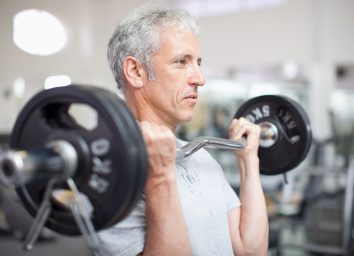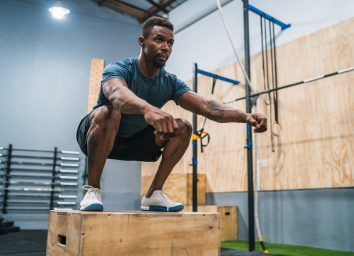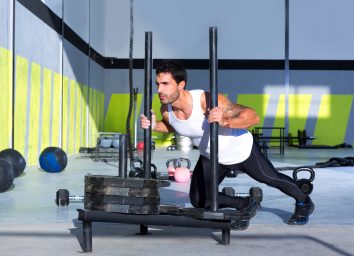Get Rid of a Sagging Lower Belly With This Fat-melting Routine, Trainer Says
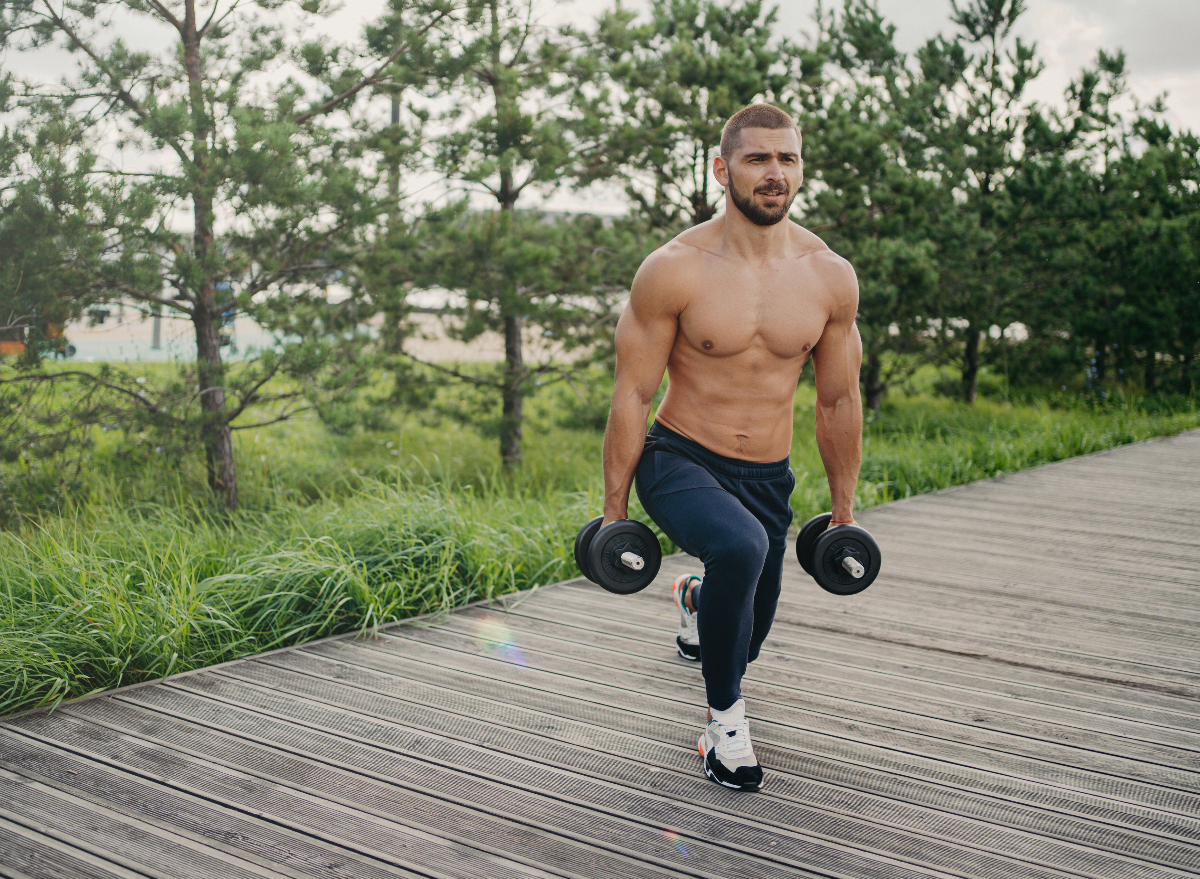
Ready to lose that saggy lower belly? Excess fat can be incredibly frustrating to deal with, and various factors can attribute to that belly sag, including your diet, age, and a lack of physical activity. Exercise can help tone your midsection if you know how—and what—to work out properly. For instance, there are various abdominal muscles, such as the external obliques, internal obliques, pyramidalis, rectus abdominis, and transversus abdominis that need your love and attention. By targeting these muscles and others that are connected, you can tone up. This will help get rid of a sagging lower belly and define your abs.
With that in mind, you'll want to check out the following fat-melting routine from Kelsey-Jean Miller, CPT, GFI, TRX trainer, and pre/postnatal trainer at The Lodge at Woodloch. She tells Eat This, Not That!, "[This] is a list of exercises to get your heart rate up, build strength, and blast fat, especially in the lower belly area. While fat reduction is not as direct as spot reduction of belly fat or hours of cardio a week, implementing more movement throughout your day, drinking water, and performing resistance training [will make] your journey a little simpler." Beyond that, these moves are great for all experience levels and don't require a lot of space or equipment to perform.
Now that you're eager to see the kind of results these exercises can bring about, it's time to tackle this effective fat-melting routine and get rid of a sagging lower belly. And next up, don't miss The 6 Best Exercises for Strong and Toned Arms in 2022, Trainer Says.
Walking with Challenges
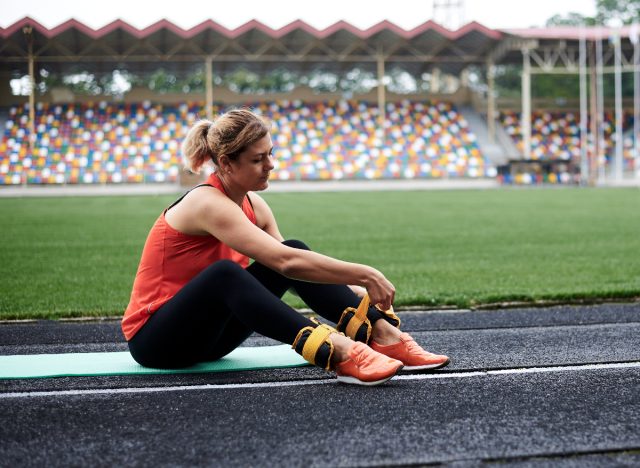
For the first of these exercises to get rid of a sagging lower belly, don't sleep on your cardio! Miller explains that basic walking is an awesome way to torch fat, up your daily calorie burn, and soak up some Vitamin D while you're at it. This can consist of simply taking your pup for a walk a few times each day or walking uphill while wearing ankle weights.
"Walking is a low to moderate intensity of aerobic nature that is easy on the joints and can be done by most people," Miller says, adding that this beneficial form of exercise "should be done at a challenging, but conversational pace and for approximately 20 to 30 minutes a day or so depending on starting level."
If you're looking for even more of a challenge, Miller says you can add in High Knees to really target your abs and upper legs. Also feel free to perform your cardio for a longer period of time, explore a more challenging type of terrain, or increase the elevation.
Related: This 10-Minute Visceral Fat Reducer Is What Your Belly Needs at 50, Trainer Says
Plank Jacks/Taps
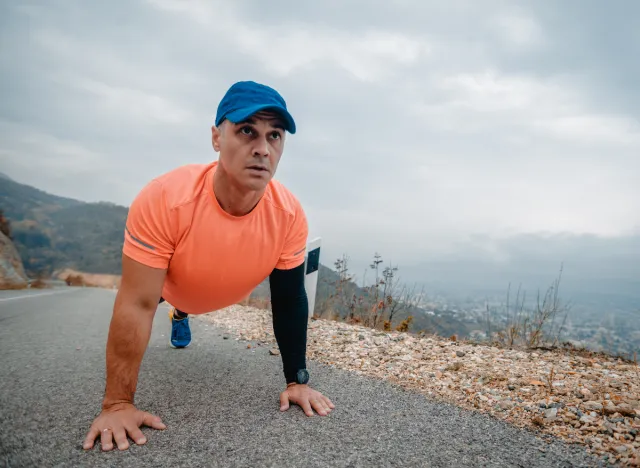
Next up, Miller says you'll want to add Plank Jacks or Taps into your routine, noting, "Planks are a stationary exercise, but in this, we are adding some leg movement to increase the difficulty."
You can perform a Plank on your hands or forearms, all while making sure your spine stays neutral, your belly button is pulled in toward your spine, and you're not holding your breath. If you're new to this exercise, Miller adds, "[You] can perform either plank for 30 seconds at a time progressing to toe taps perhaps 10 per side. [When you're more comfortable with this exercise,] advance to jacks in which jumping jack legs are performed whilst in the planking position."
As for how many you should aim to do, Miller recommends 10 reps on each side for Toe Taps or 20 Plank Jacks for 4 sets.
Related: The #1 Outdoor Workout To Lose Belly Fat in a Week, Says Trainer
Burpees
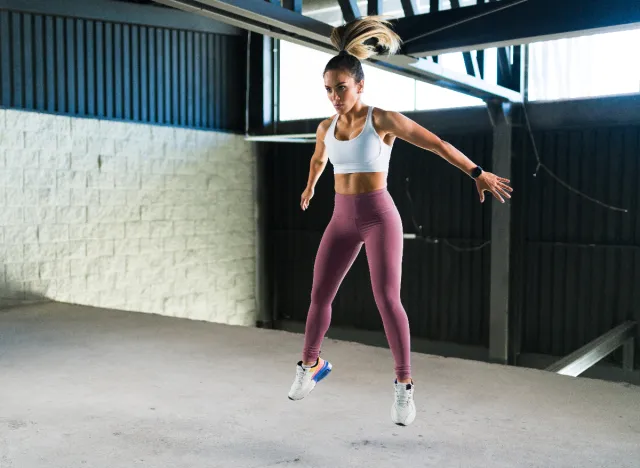
Burpees are Miller's favorite, and she says they often get a bad rap. "Yes, they aren't the most comfortable as well as challenging, but we will never grow if we do not get uncomfortable," she says while noting that this exercise can improve your cardiovascular health and strengthen your core. "Many assume that Chest-to-Floor Burpees are the only option, but they can be scaled depending on fitness level," she says.
To perform a Burpee, stand before getting down into the same position you would be in if you were doing a pushup. From there, push yourself back up, get into a squat, and jump up in one smooth movement. If you're a beginner, Miller suggests standing to Plank Walkouts. Others who are more advanced can do Knee Tuck Burpees. Try completing 4 sets of 10 to 12 reps, and take a break to rest when needed.
Squat and Press

Finally, Miller suggests adding a Squat and Press into your fat-melting routine. She explains, "I would recommend using dumbbells to perform this exercise. This is a great move, because it works multiple muscle groups (quads, hamstrings, glutes, delts, triceps, traps, abdominals, etc.) while changing your core stability, increasing heart rate, and overcoming the increased resistance exerted by the weights."
Tackle a Squat and Press by first performing a typical Squat. Do this by standing with your legs shoulder-width distance apart and squatting down by bending your knees while also bringing your hips down as low as you comfortably and safely can. Then, raise back up into the same standing position you started in. Add a press into the action by holding a dumbbell in each hand as Miller recommends. While you move down into a Squat, pull the weights down with your arms bent at the elbows. When you rise out of the Squat, lift the weights above your head.
Miller notes, "[The] weights should be a size that is challenging but manageable. A good set and rep range recommendation is 4 sets of 8 to 10 focusing on form and exhaling with exertion."
